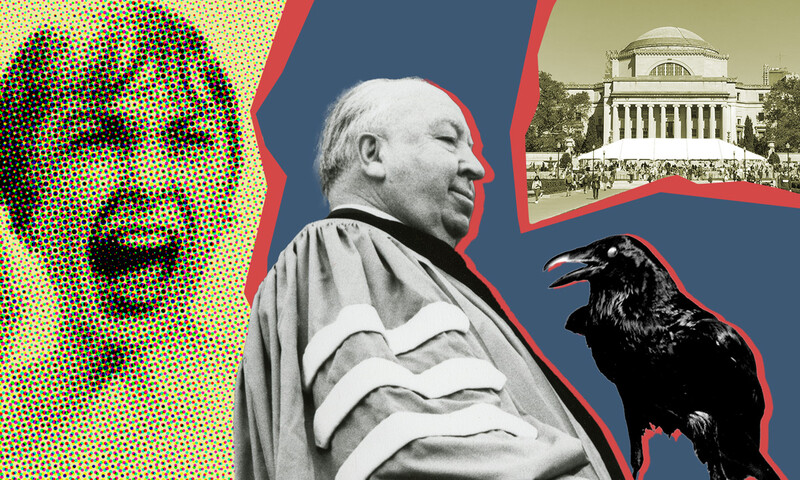The appearance on history’s stage of a presidential candidate of a major political party who says, at his campaign kickoff rally, “When Mexico sends its people, they’re not sending their best. They’re not sending you ... They’re bringing drugs. They’re bringing crime. They’re rapists”; and who, a year later, at his nomination speech, speaks of “illegal immigrant families” being “released by the tens of thousands into our communities,” and makes unsubtle rhetorical connections between said immigrants and the killing of young white women — the rise of such a figure, one imagines, would set off the same professional sirens for an immigration historian that a 9.0-magnitude earthquake would for a seismologist.
For Mae Ngai ’98GSAS, a historian of US politics and the Lung Family Professor of Asian American Studies at Columbia, the specter of such a presidency means a busy phone and an opportunity to correct some popular misconceptions. “Immigration is an issue about which many people have fixed opinions and very strong feelings,” she says. “But they’re often based on a poor understanding of history and even contemporary facts.”
Ngai zooms out with her historian’s lens to reveal a familiar pattern. Between the 1880s and 1924, some twenty-three million people from eastern and southern Europe (mostly Italians, Greeks, Poles, and Jews) immigrated to America. Different from the Anglo-Protestant majority in religion, language, customs, and physiognomy, the new immigrants were not always greeted warmly. “There are apt comparisons between immigration today and a hundred years ago,” says Ngai, who is the author of Impossible Subjects: Illegal Aliens and the Making of Modern America. “In both periods you had a growing economy but also a change in the economic structure. With industrialization and urbanization, there was enormous demand for unskilled labor as mass production became more dominant. Skilled craftspeople lost power in the job market, and they blamed the new immigrants for taking their jobs. But the immigrants didn’t take their jobs; there was a structural shift in the economy.
“Similarly, from the 1990s until 2008 we had a huge economic expansion and a shift from manufacturing to finance and service. This created a demand for mostly low-skilled, low-wage immigrant labor. The casualties of this change got very upset, and one reaction was to blame immigrants for taking their jobs, when in fact immigrants took new jobs.”
In the earlier period, xenophobia was also blatant in high places: by 1924, nativist anxieties over the changing complexion of the country led Congress to pass the Johnson-Reed Act, which placed strict quotas on immigration from eastern and southern Europe. The law also doubled down on the 1882 Chinese Exclusion Act — the first law to deny immigration of an entire ethnic group — by banning all East Asian peoples. The new draconian restrictions resulted in what Ngai calls a “mass phenomenon” of illegal immigration.
As for Mexicans, immigration policy in the 1920s and 1930s treated them “as an inexpensive, disposable labor force, desired for work in the fields but undesirable for inclusion in the polity,” Ngai says.
By the 1950s and 1960s, however, the assimilated children and grandchildren of ethnic European immigrants became a powerful voting bloc in the urban industrial north. “For them,” says Ngai, “the immigration quotas established in 1924 still carried a stigma of inferiority. So they organized to repeal those quotas. Immigration reform was their civil-rights movement.”
On Capitol Hill, the fight was led by Brooklyn congressman Emanuel Celler 1910CC, 1912LAW, the grandson of Jewish-German immigrants. The Hart-Celler Act of 1965 abolished national-origin quotas (allocated to ensure that the future US population would maintain the ethnic proportions of 1890) and replaced them with evenhanded quotas that gave each country the same limit. “That’s a civil-rights era logic,” says Ngai. “Treat every country the same. But it’s a formal rather than substantive kind of equality, because it meant, for example, that Mexico or China had the same limits as New Zealand. This is the system we live under today.”
With a per-country limit of 26,500 people per year, says Ngai, countries like Mexico, India, China, the Philippines, and the Dominican Republic always max out. “When people say of undocumented immigrants, ‘They should go to the back of the line,’ they don’t realize that for some, the wait is as long as forty years — while for other countries there is no line.”
Some people have chosen not to wait. There are an estimated 11.3 million undocumented people residing in the US, but most of the immigrants crossing the Mexican border today aren’t Mexicans: they come from Central America, fleeing drug-gang violence in Honduras, El Salvador, and Guatemala. (Honduras and El Salvador have the two highest murder rates in the world.)
But no matter who is elected president in November, Ngai says, no border walls can be built, no mass deportations can proceed, without funding from Congress — “and I don’t think Congress is going to foot that bill.” For Ngai, it’s our national ethos that’s at stake. “Depending on who’s elected, the climate toward immigrants could be one of restriction and hate or one of inclusion and reform,” she says. “We’ll soon find out.”


